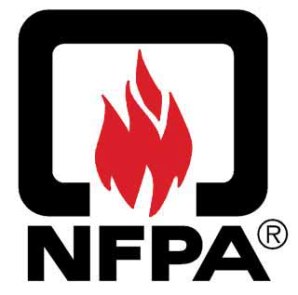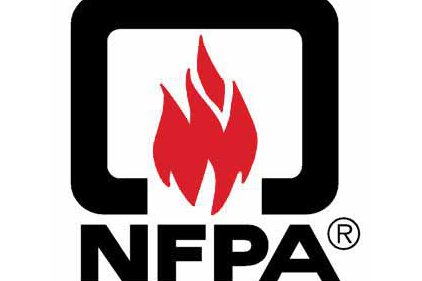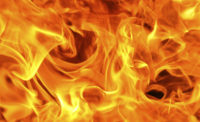 The National Fire Protection Association (NFPA) presented four awards to recognize outstanding achievements in fire and life safety during the 2014 NFPA Conference & Expo.
The National Fire Protection Association (NFPA) presented four awards to recognize outstanding achievements in fire and life safety during the 2014 NFPA Conference & Expo.
Standards Medal
The recipient of this year’s Standards Medal is James K. Lathrop of Niantic, Conn. He is currently vice president of Koffel Associates, Inc., a fire protection engineering and life safety design and consulting firm. This award is given in recognition of outstanding contributions to fire safety and the development of codes and standards. It is also the most distinguished award given by NFPA’s Standards Council.
Lathrop is honored with this award due to his longtime dedication and contributions towards NFPA technical committees. Colloquially known as “Mr. Life Safety,” Lathrop has spearheaded numerous projects including the NFPA Life Safety ® Project, and has edited four editions of the NFPA Life Safety Code® Handbook. He has also testified on a wide range of fire safety issues before U.S. House and Senate subcommittees, as well as serving as NFPA’s Chief Life Safety Engineer from 1983 to 1991.
Fire Protection Research Foundation Medal
The winning project of the 2014 Fire Protection Research Foundation Medal is “Best Practices for Emergency Response to Incidents Involving Electric Vehicles Battery Hazards: A Report on Full-Scale Testing Results.” The Fire Protection Research Foundation Medal recognizes a project completed in 2013 that best exemplifies the Foundation’s fire safety mission and the collaborative approach to execution that is the hallmark of all its projects. The winner is recommended to the chair of the Foundation’s Board by an awards committee made up of members of the Board, Research Advisory Committee, and NFPA technical staff members. Exponent, Inc. employees R. Thomas Long, Jr., Andrew F. Blum, Thomas J. Bress, and Benjamin R.T. Cotts, authored the report.
This project was sponsored by the U.S. Department of Energy (the Idaho National Laboratory), the U.S. Department of Transportation (National Highway Traffic Safety Administration), and the Alliance of Automobile Manufacturers. In addition, three groups of panelists (main panel, emergency responder panel, and battery technology panel), provided guidance and expertise to the project. The purpose of the project was to conduct a research program to develop the technical basis for best practices of emergency response procedures for electric drive vehicle battery incidents. Additionally, the research considered certain details, including suppression methods and agents, personal protective equipment (PPE), and clean-up/overhaul operations. Full-scale testing of large format Lithium-ion batteries used in these vehicles was also a critical component of the project.
Harry C. Bigglestone Award
This year’s 2014 Harry C. Bigglestone Award for Excellence in Communication of Fire Protection Concepts is shared by two papers: “Probabilistic Evaluation of Structural Fire Resistance” by Ann Jeffers, Qianru Guo, Kaihang Shi, and Zili Jia of the Department of Civil and Environmental Engineering at the University of Michigan and “Predicting Human Behavior During Fires” by Erica Kuligowski of the National Institute of Standards and Technology. Out of the 44 papers published in 2013 which were eligible for the award, these two papers were first among those nominated by the Editorial Board and then judged to be the best papers by the panel formed by the Associate Editors.
“Probabilistic Evaluation of Structural Fire Resistance” and “Predicting Human Behavior during Fires” both appeared in quarterly 2013 issues of Fire Technology, which is available for free access to NFPA members.
Jeffers’ paper reveals the full power of the probabilistic approach to evaluate the fire resistance of a structure given the uncertainties of key fire and structural parameters. It serves as a major boost for the structural reliability of fire protection and will help close the gap with more mature structural hazard calculations such as wind and earthquakes where the probabilistic evaluation is already in use.
Kuligowski’s paper serves as an in-depth review of human behavior models during building fires, an emerging topic gaining great strength and a promising future in Fire Technology. In addition, the paper also addresses the importance of model robustness and validation while identifying knowledge gaps within the material.
The Harry C. Bigglestone award is presented annually, along with a $5,000 cash prize, to the author(s) of the most outstanding paper submitted to Fire Technology during the previous calendar year, as voted by the International Editorial Board. This award is named after the late Harry C. Bigglestone, a trustee of the Fire Protection Research Foundation, and fellow and president of the Society of Fire Protection Engineers.
Industrial Fire Protection Section Fire Prevention Week Award
The winner of the 2013 Industrial Fire Protection Section Fire Prevention Week Award is Bunge North America from St. Louis, Mo. Bunge North America is the largest operating division of Bunge Limited, a global agriculture and food company. This award was created to recognize businesses that promote fire and related safety messages to its employees and their communities during the 2013 Fire Prevention Week.
Bunge North America is receiving this award due to their commitment to spreading fire safety messages throughout the company and their communities. Some of the activities included hosting office-wide safety talks on the proper use of fire extinguishers and reviewing office evacuation procedures. They also hosted an information session on home fire prevention tips, featuring an inspector from the Missouri Division of Fire Safety.
About the Fire Protection Research Foundation
The Fire Protection Research Foundation plans, manages, and communicates research on a broad range of fire safety issues in collaboration with scientists and laboratories around the world. The Foundation is an affiliate of NFPA.
About the National Fire Protection Association (NFPA)
NFPA is a worldwide leader in fire, electrical, building, and life safety. The mission of the international nonprofit organization founded in 1896 is to reduce the worldwide burden of fire and other hazards on the quality of life by providing and advocating consensus codes and standards, research, training, and education. NFPA develops more than 300 codes and standards to minimize the possibility and effects of fire and other hazards. All NFPA codes and standards can be viewed at no cost at www.nfpa.org/freeaccess.


